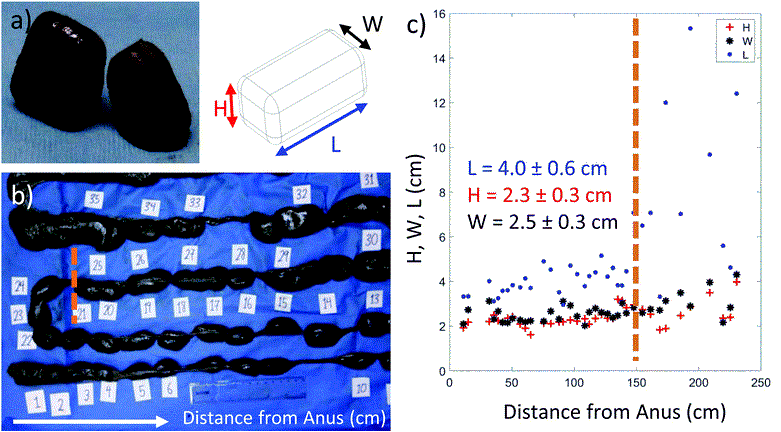
Photo by Meg Jerrard on Unsplash
The internet has been abuzz for years with facts about wombats – they can run at up to 25 miles per hour, take two weeks to digest a meal, and have frighteningly tough bums. Perhaps the most beloved wombat fact is that they poo in cubes.

Photo by Dey Alexander under CC BY-NC-SA 2.0
The cube poo may be internet famous, but until recently, the biological mechanism behind the hexahedral faeces of these herbivorous Australians has not been understood. Luckily, scientists have gotten weird and collaborated to make a poo breakthrough.
What is a wombat?
Wombats are short-legged creatures that are native to Australia. Adults reach around 1m in length and weigh between 20-40kg. They possess powerful claws and rodent-like teeth, which they use to dig extensive burrow systems. Cleverly, their backward-facing pouch prevents soil gathering over their young while they dig. Wombats are herbivores whose diet includes grasses, herbs, roots and bark. Their fur can be brown, grey or black and they have a lifespan of 15-20 years in the wild and up to 30 years in captivity. Collectively, they can be referred to as a “wisdom” of wombats.
But what about their poo?
One of the most distinctive features of a wombat is the fact that they produce around 10 faecal cubes per day. They are the only animals in the world who produce cube-shaped poo, with the theory being that it gives them in advantage in marking their territory with a signpost that can’t roll away. Until recently, how they did this was not well understood, with guesses ranging from paw-powered poo shaping to the ‘square anus’ theory.
The new weirdness
The fresh news in wombat poo is that a team of researchers led by Professors David Hu (who studies fluid mechanics) and Scott Carver (who studies wildlife ecology) have finally uncovered the mechanism that accounts for the square poo – at least, it accounts for 4 out of the 6 faces of the cube. The lead author of the paper, Dr. Patricia Yang, had the right expertise to solve the mystery. She built her career on studying the mechanics of bodies, including the movement of blood and urine, making her the perfect scientist to tackle the question of how a round hole can extrude a square peg. Together with a team of biologists, mechanical engineers, and biomedical engineers, she came up with a pretty conclusive answer.
It’s honestly a terrific paper. If you like science, do yourself a favour and read it in full – you only need to make a free RSC account. There are multiple supplementary movie files, one of which is a CT scan of a wombat anus. No wombats were harmed (by the scientists, at least) – all wombat specimens in the study were euthanised after falling afoul of fast-moving vehicles, and frozen for just such an occasion as this.
If you don’t have time for a leisurely read of the original literature, read on for the best bits.
“If wombats were to make cubes similar to the way we make noodles, we would expect a square anal sphincter.”
Thus begins the results section, setting the tone for the engineering-informed journey we are about to take. All previous theories about wombat poo are confidently dismissed, using evidence ranging from CT scans to the anatomical location of the pelvic bones (“nowhere in the vicinity of the colon”). The authors make full use of the tools and expertise at their disposal, including highlights like:
- Using a robotic laser arm to do a 3D scan of a wombat poo
- Drying the poo in an oven to measure water content (no mention of labmate annoyance levels)
- Discarding the 1992 definition of the squircle as insufficiently robust for wombat poo, instead proposing a new metric for squareness
- Filling the data gap for peristaltic contraction frequency of wombats by estimating that it is somewhere between the known values for humans and dogs
- Doing some quick play-dough work to confirm that cubes stay in place better on an incline, while spheres work best on a flat surface (explaining the prevalence of cubic poo piles on rocks and logs)

Yang et al. measured and plotted the height, width, and length of poop cubes (technically rectangular prisms, as they point out) in the last 2.4 metres of the intestine. Figure adapted from Soft Matter, 2021,17, 475-488.
By the end of the comprehensive interdisciplinary study, the researchers conclude that wombat intestines have an asymmetrical cross-section, with some areas being thicker and stiffer, while others are thinner and stretchier. This gradually puts corners onto the poo as it moves through the intestine, becoming drier and more able to hold its shape as it reaches the exit. There’s still some work to be done, as this only explains 4 out of the 6 cube faces, but the authors suggest considering the geometric cracking that occurs in cooling lava and drying corn starch as a possible explanation for the last two faces. All in all, it’s definitely a discovery.
Fun bonus: The 2021 research paper was published in the Royal Society of Chemistry journal Soft Matter, which usually covers traditional, dignified chemistry and materials science topics like liquid crystals, soft nanotechnology, and colloids. With the right research, a carefully crafted cover letter, and an open-minded editor, science communication can be extremely interdisciplinary!
What else can we learn from the study of poo?
Biomimicry is a practice that learns from and mimics the strategies found in nature to solve the design challenges that we, as humans, face. Wider impacts of Yang’s work could include applications of early detection of colon cancer, manufacture of cubic sausages, or, more distantly, soft robotics. From using poo as a scientific teaching aid, research at the University of York making sense of sewage to paleoscatologists digging up poo ‘as precious as the crown jewels’ for display in museums, poo can be a serious business!

